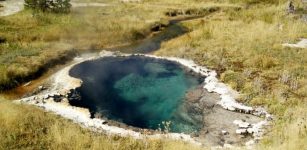Ancient Megadrought Causes Scientific Clash – Are We Living In The Meghalayan Age Or Not?
Cynthia McKanzie – MessageToEagle.com – Scientists have clashed over the issue whether we are currently living in the Meghalayan Age or not.
The argument is based on whether a catastrophic worldwide drought that occurred about 4,200 years ago and led to destruction of several societies in various corner of the globe.
“The megadrought had profound societal effects,” says Weiss. Cities and towns were abandoned, and people transitioned from urban to rural societies, “archaeologist Harvey Weiss, a professor of Near Eastern Civilizations in Yale University’s anthropology department and an author of the 2012 ICS paper that initially proposed the establishment of the Meghalayan Age said.
According to Weiss, several ancient civilizations were impacted by the by the megadrought. Egypt’s Old Kingdom, the Akkadian Empire in Mesopotamia, and the Indus Valley of modern-day Pakistan and India were all affected. Large cities like Mohenjo Daro and Harappa were abandoned around this time.
However, this theory has now been questioned by Guy Middleton, a senior researcher at the Czech Institute of Egyptology at Charles University.
In a new article in Science, it is written that there is little archaeological evidence for such sudden, widespread civilizational collapse.
According to Middleton, “detailed archaeological and historical analysis, including recent investigations of chronology and paleoclimate, suggests that rather than simultaneous civilizational collapse, different kinds of changes occurred in different parts of the world at different times, all of them less abrupt than once thought.”
A National Geographic reports, the Meghalayan Age “was only recently defined. The youngest, newest unit of the geologic time scale, it was adopted earlier this year by the International Commission on Stratigraphy (ICS), a subcommittee of the International Union of Geographic Sciences that focuses on defining the geologic time scale. With the decision, the ICS split the current geological epoch that began about 11,650 years ago—the Holocene— into three parts. The Meghalayan Age is the newest sliver of that time scale, running from 4,200 years ago until the present day.”
Middleton argues the collapse of these societies were gradual and not caused by a major dramatic climate change.
“The idea that the collapse of a society can be put down to one simple reason ignores people’s agency,” Middleton said.
See also:
New Drought Atlas Maps 2,000 Years Of Climate In Europe
Ancient Peat Bog Sheds New Light On When Sahara Turned Into A Desert – But Not Why It Happened
“Things aren’t usually as simple as climate change equals collapse.” More often, Middleton added, societies would have reorganized.
According to National Geographic, “the only point of agreement between Weiss and Middleton seems to be the resilience that causes humans to regroup—whether they do so in response to a societal collapse or not. For Weiss, societal collapses were accompanied by a scramble away from drought and toward self-reinvention. And what Middleton sees as societal reorganizations, not collapses, were driven by human resilience, not “ancient apocalypse.”
Both men insist that their views are widely accepted. “The editors at the journal Science, strangely enough, think this is ‘scientific controversy,’” says Weiss.
“From where I sit,” says Middleton.”
The scientific debate whether we are living in the Meghalayan Age or not will undoubtedly continue for a while.
Written by Cynthia McKanzie – MessageToEagle.com Staff Writer











